5 minutes
DLL Proxying with OneDrive
1. PREFACE
To further weaponized my malware, i decided to implement a DLL proxying as it is widely used by threat actors and it also gives a lot of place for imagination and creativity. I will be continuing from where i left off with my Sliver C2 stager that I was injecting while bypassing windows defender by using a combination of techniques (IAT Hiding & Obfuscation, NT API Hashing). In hopes of making my attack a little bit more stealthier.
2. Theory (fun part, yeah…?)
What is a DLL?
A Dynamic Link Library contains code that can be reused by a program
- DLL are loaded into memory at runtime
- Each process started on windows uses them
It contains exported functions that can be used externally by other programs
What is a DLL search order?
When a process is started it will start searching for the necessary DLL in the directory where it’s located and if not found, it will then move onto other folders such as the system directory
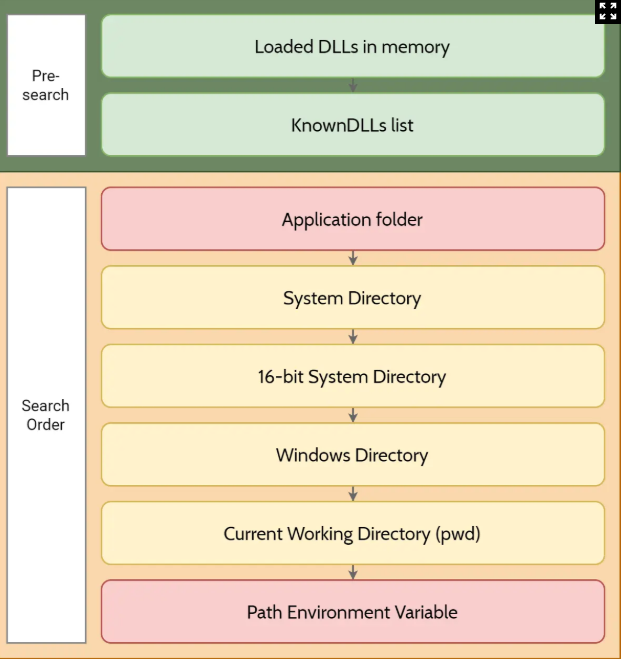
What is a DLL hijacking?
If an application load modules by specifying only their name instead of their full path and the DLL is not present in the first search candidate, it will try other directories and that’s how an attacker could force the application to load his malicious DLL instead of the original one.
⚠️ | The problem with this is that the original exported functions of the original
DLLwill not be available/present which could break some essential functionality of the running process, which is not very good
Why all these definitions?
You might be asking why all these definitions, simply because to understand how DLL Proxying works you need to grasp these little core concepts. Basically, it performs a DLL hijacking, but we’re able to redirect the legit exported functions to the legit DLL so we don’t break the functionality of the process and at the same time we can execute our malicious code.
⚠️ | You could still slow down the process while loading the
DLLso it’s recommended to perform
Remote Process InjectionRemote Thread CreationThread Hijack
3. Walkthrough
⚠️ | I want to mention that I’m using 2 windows machine (FlareVM & victim) and i’ve installed OneDrive on FlareVm with
niniteso the executable is storedC:\Program Files\Microsoft OneDrive\but usually it would be located somewhere inC:\Users\<user>\AppData\Local\Microsoft\OneDrivewhere data and settings for individual user are stored
Finding the executable and the DLL
- Select an executable to perform the attack
- Choose a
dllthat is used by it ( preferably one that do not import a lot of functions)
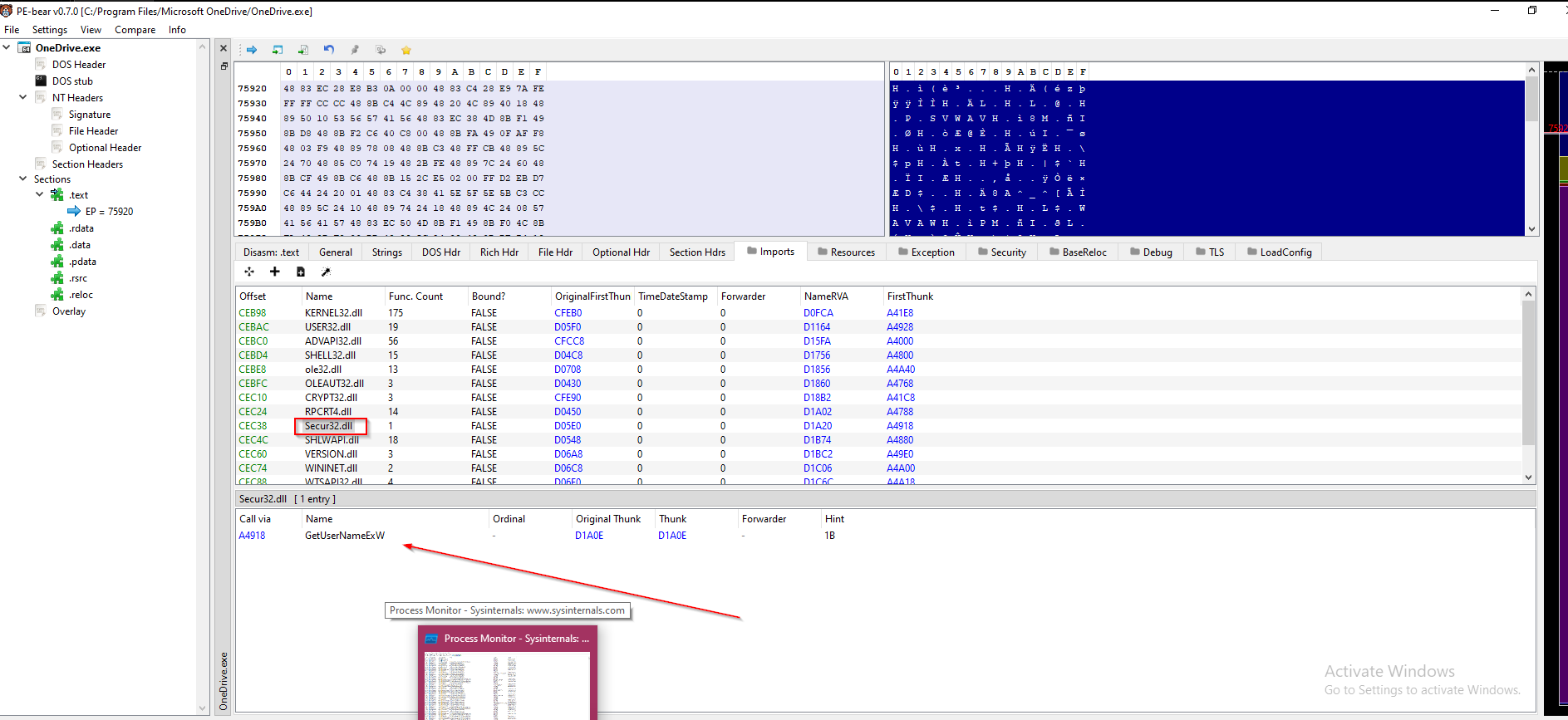
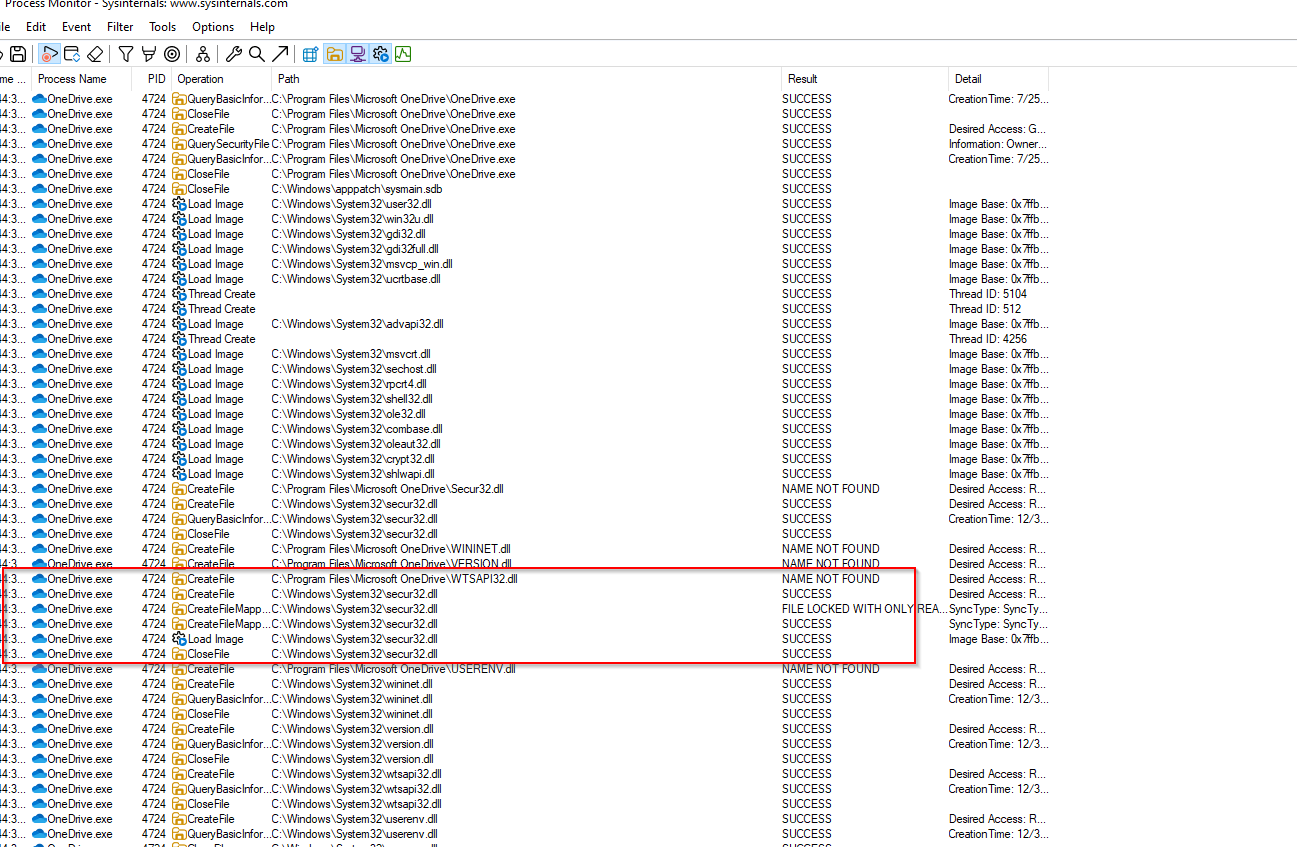
We can see that
secur32.dllis being loaded fromC:\Windows\System32so let’s see what happens if we put one in the same directory as the executableI’ve written a custom temporary
secur32.dllthat will execute a message box and i’ve copied and renamed the originalsecur32.dlltosecurr32.dllto be able to redirect the original implementation ofGetUsernameExW
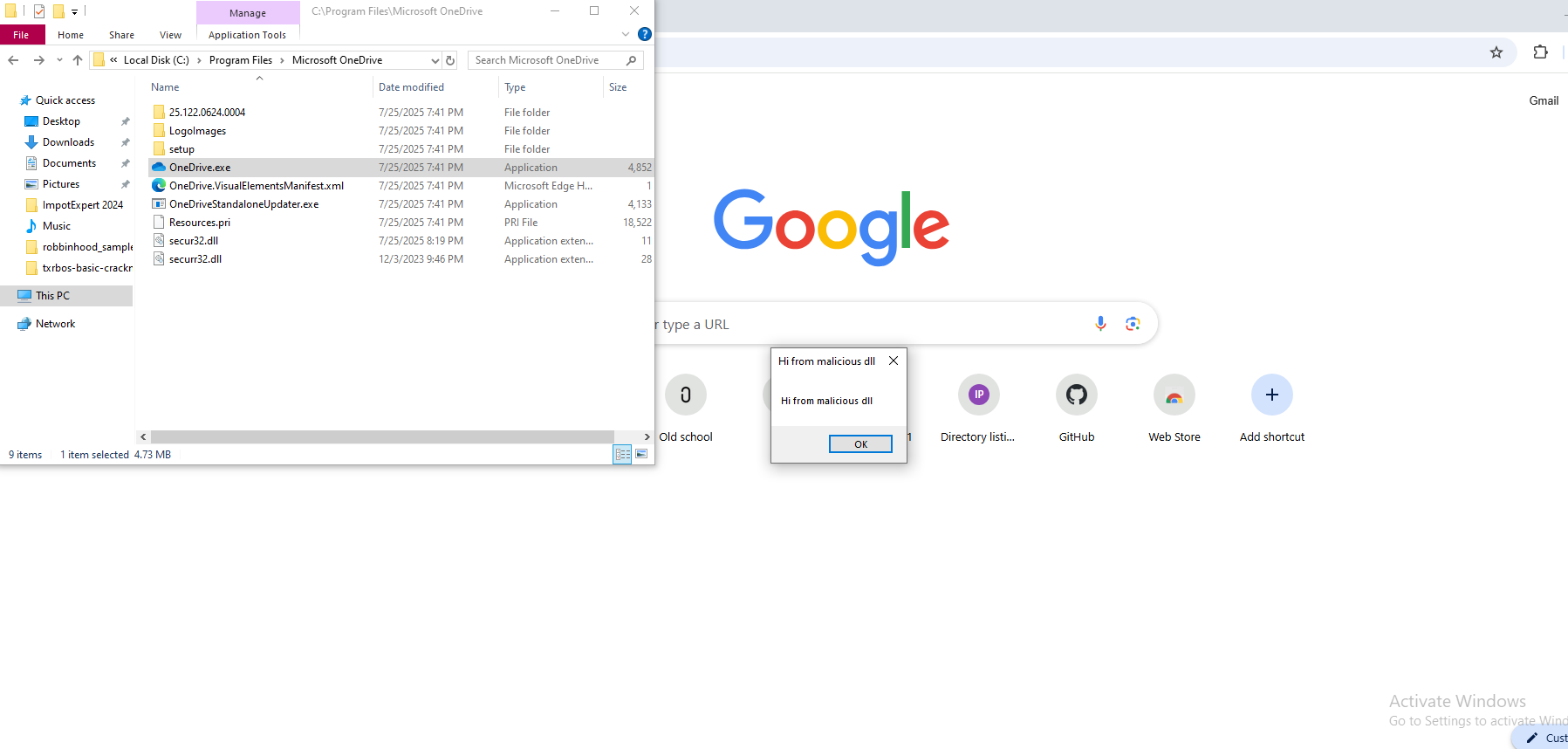
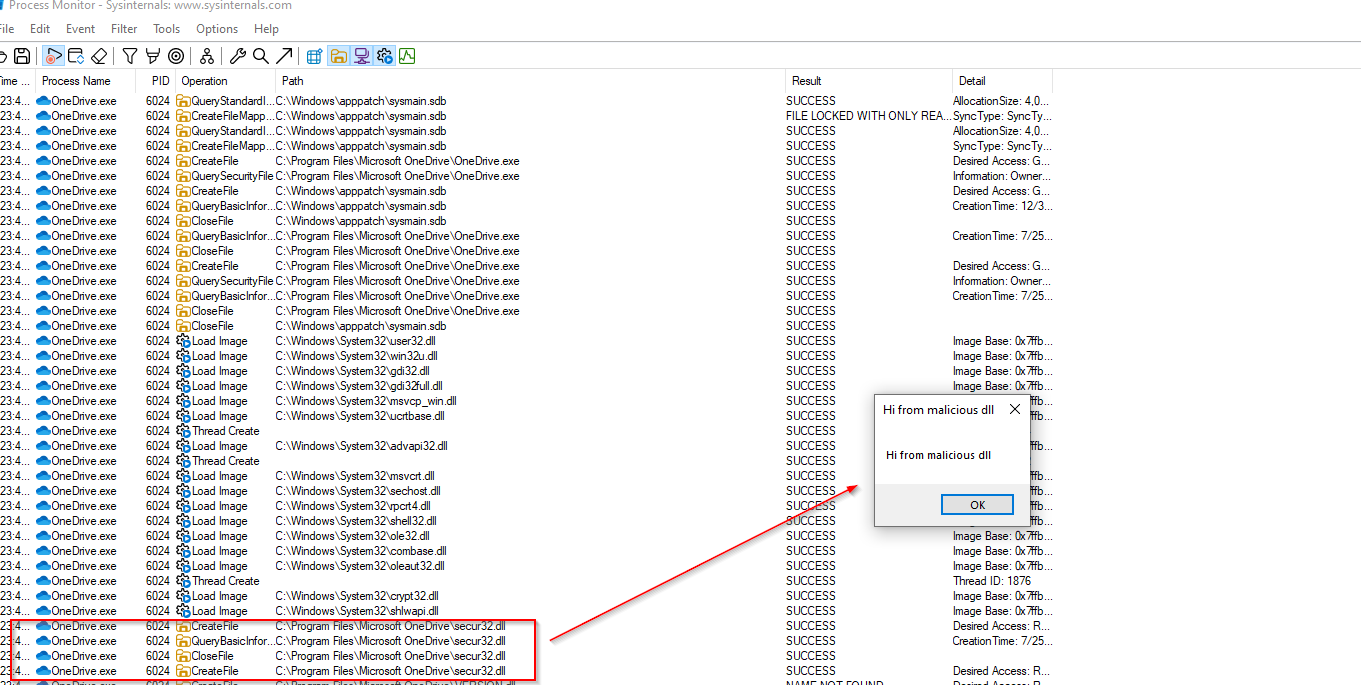
That executable is not a good one because we need other dll in the directory of the executable so we can provide some camouflage and as we can see the directory is pretty empty
I decided to go for the
OneDriveServiceUpdater.exe, but one thing to note is that on every version there’s a new folder being created insideMicrosoft Onedrivefolder so on a new version they will be a new folder with a new version ofOneDriveServiceUpdater.exe, so in a real world scenario it would be good to check the registry to know which folder we would have to drop ourdllinto
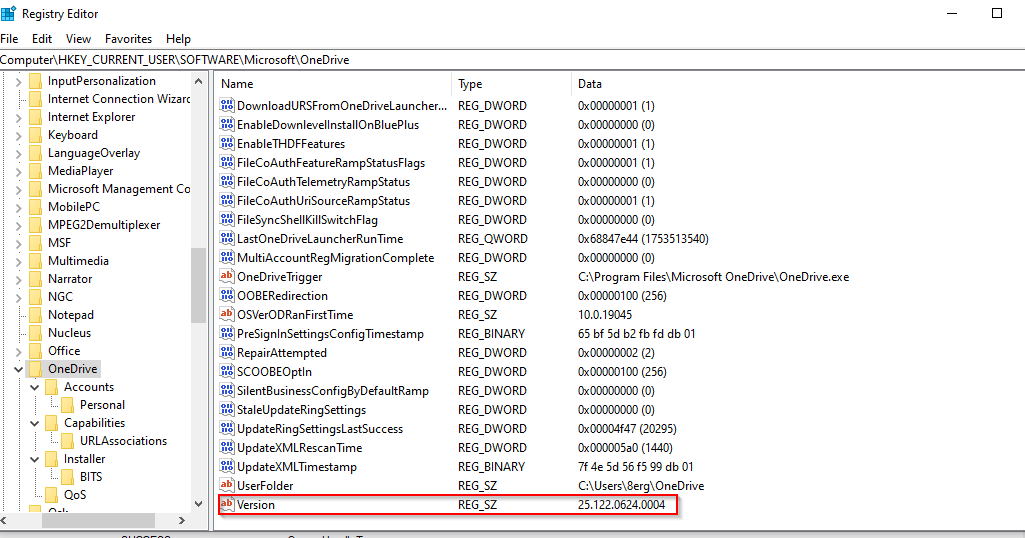
- I would have to read this registry in order to know in what folder i should drop it and also probably to move itself for persistence, if we ever need to inject the stager beacon again, but for now, we’ll drop it manually
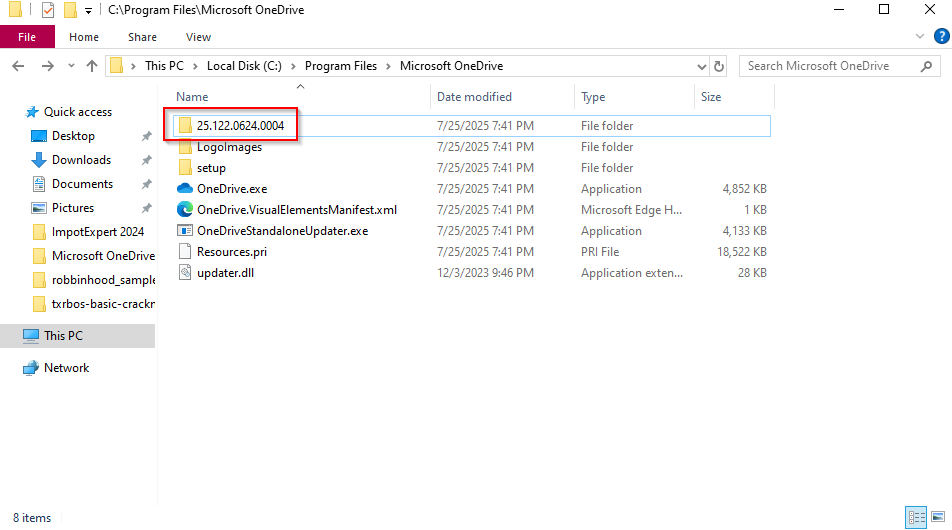
- We can also see that there’s a
secur32.dllbeing imported so we can try our previous proof-of-concept
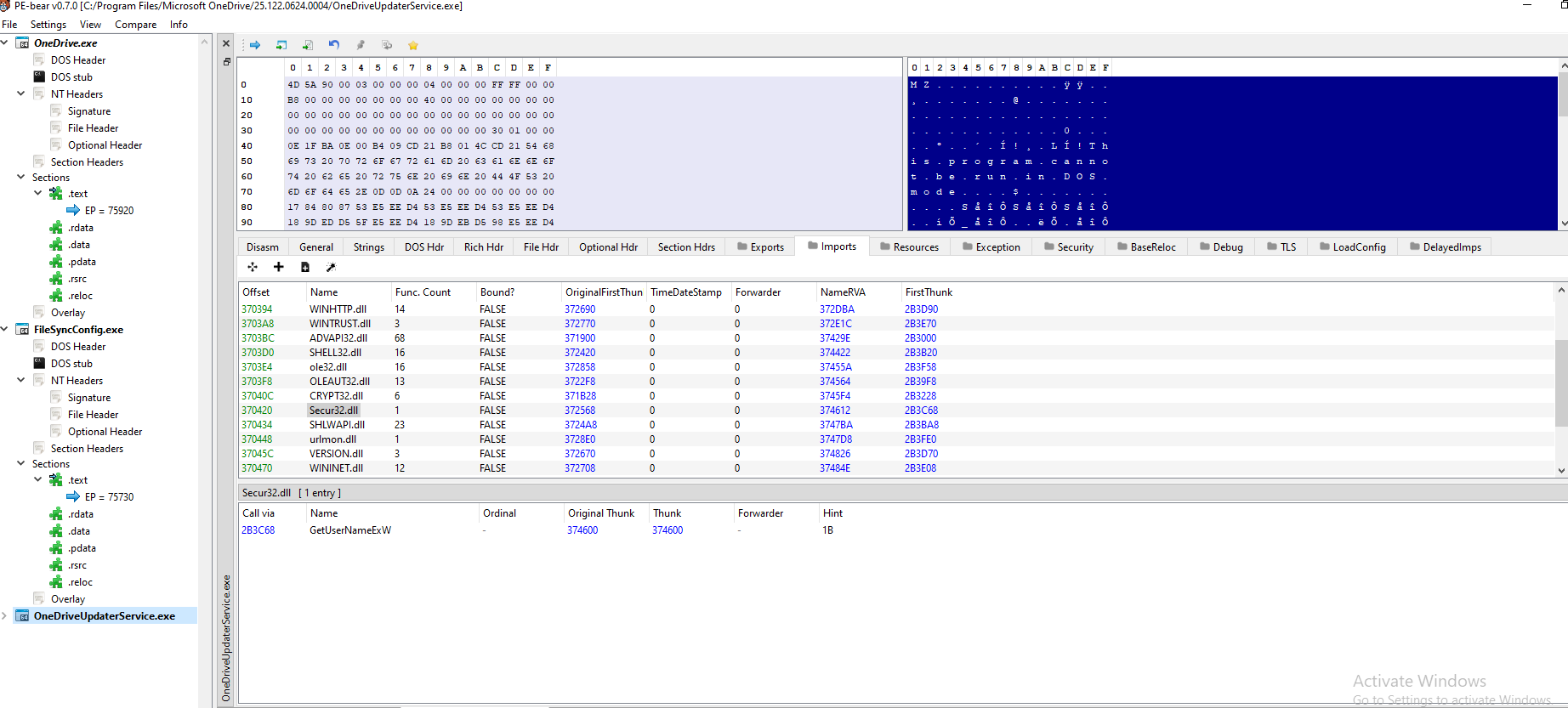
- so i renamed the real
secur32.dlltoupdater.dlland my maliciousdlltosecur32.dlland I move them intoC:\Program Files\Microsoft OneDrive\25.122.0624.0004and it works
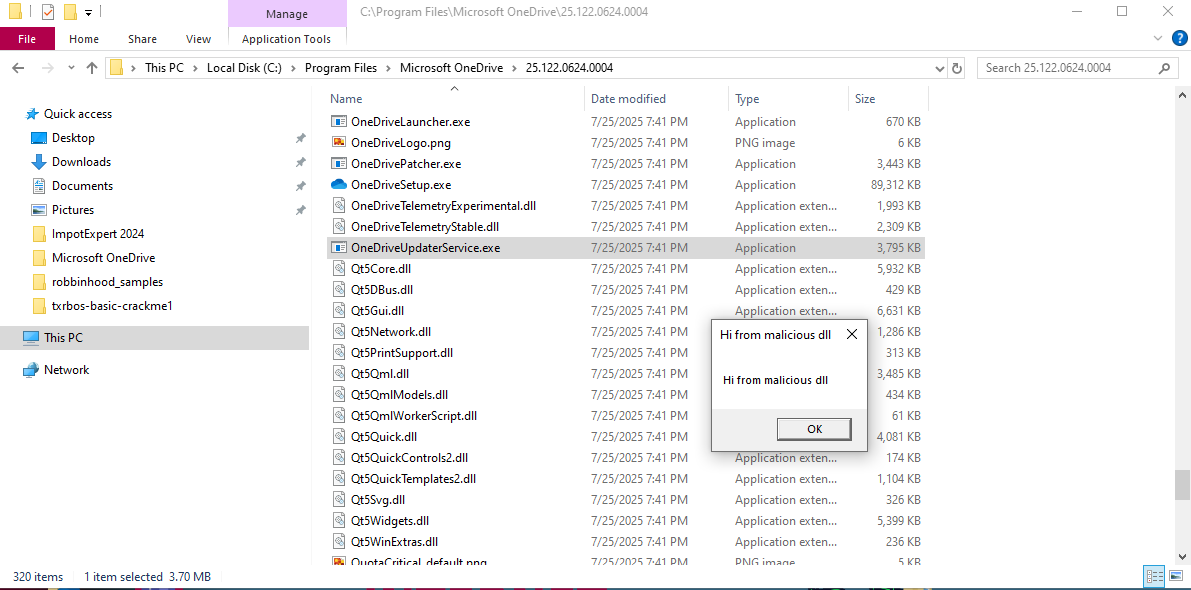
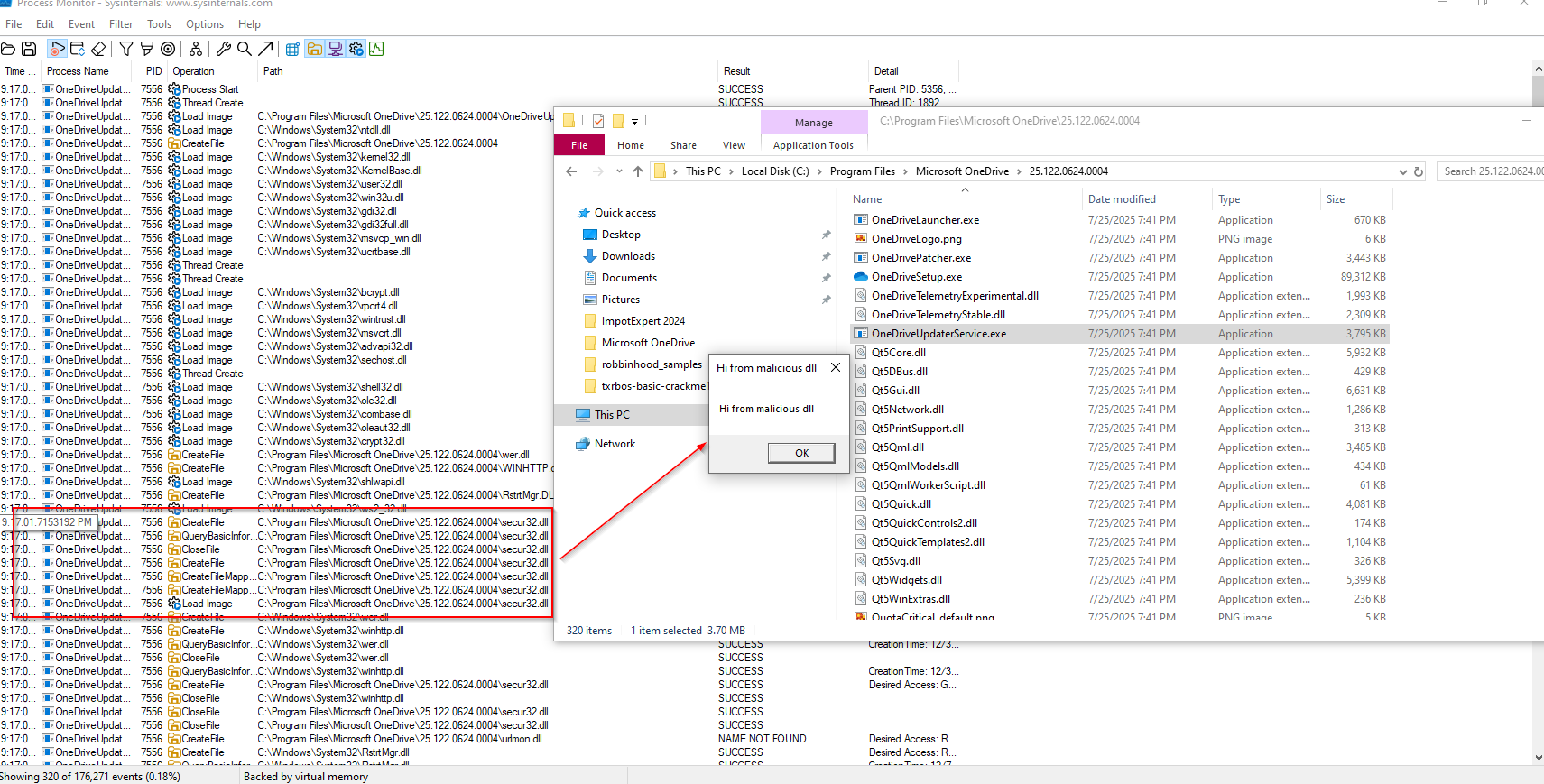
Writing our malicious implementation
So as i previously was able to bypass windows defender with combining different techniques such as (IAT Hiding & Obfuscation, NT API Hashing) so why change something that works?
I adapt it for the DLL and i still hardcode the process ID, sorry…😅
⚠️ | Disable precompiled headers if you remove
pch.h, if you deleted it
Dropping our malicious DLL
- Download the malicious
dlland renamed itsecur32.dll - Copying and renaming valid
secur32.dlltoupdater.dll - Dropping both of these inside the folder containing
OneDriveUpdaterService.exe - Watch the magic unfold
ℹ️ | You will probably ask me why i dropped here, simple because it’s more crowded, since there’s a lot of
DLLour own get some camouflage

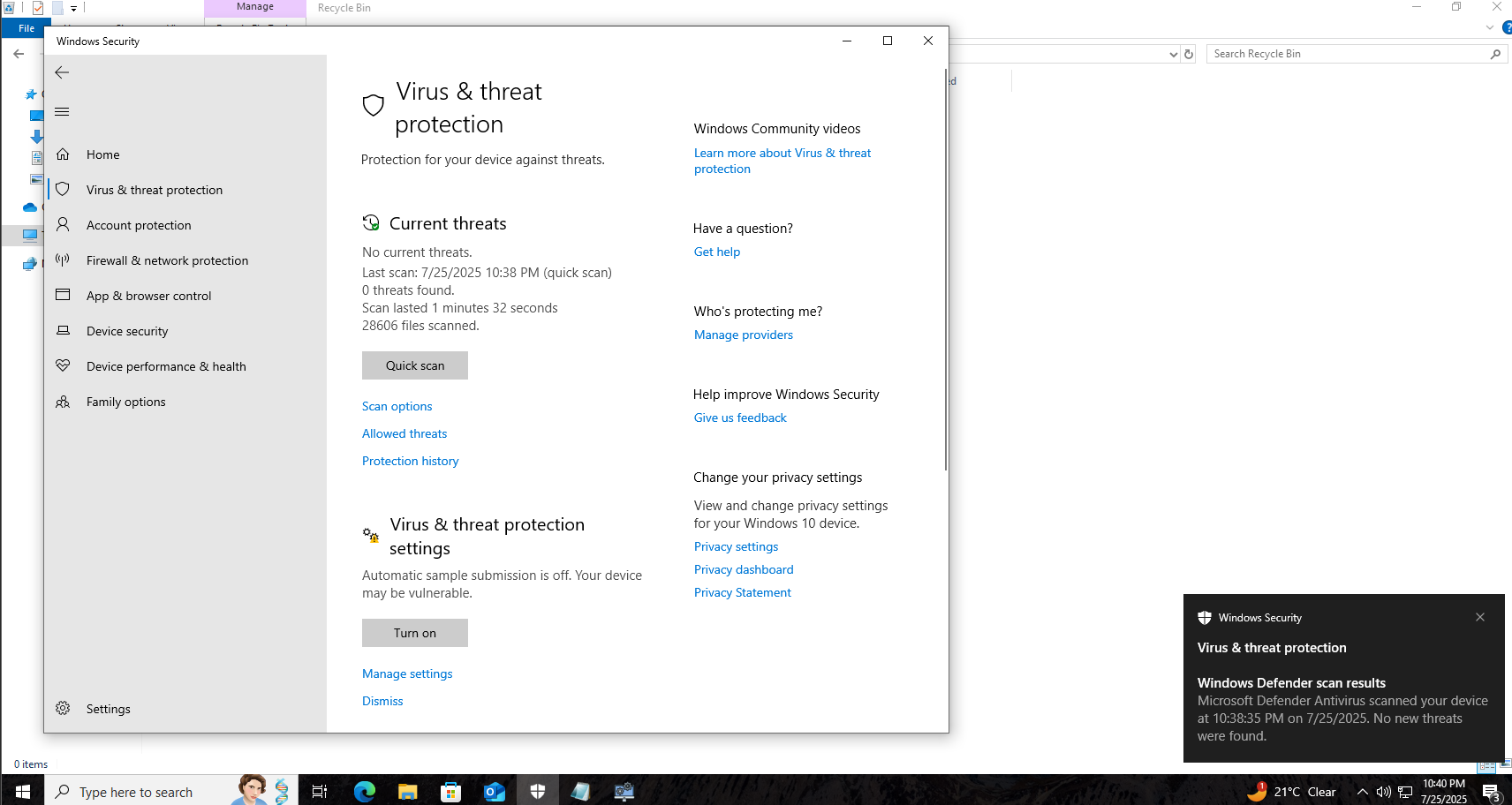
Even after running the execution flow, the malicious execution is not detected by windows defender compared to before where it would get detected after executing the payload and running Microsoft defender scan
[UPDATE]
✅ Yeah! | I recently learned that i could just directly reference the
secur32.dllfrom the system directories, so no need the renamed the originaldllmove it there and…Anyway no need to do all that anymore🤗
So now we go from this
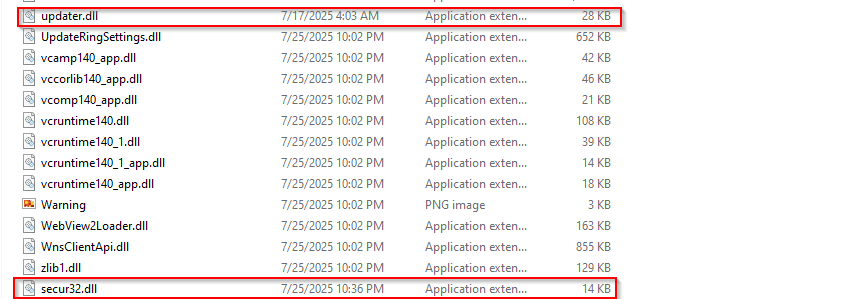
To this
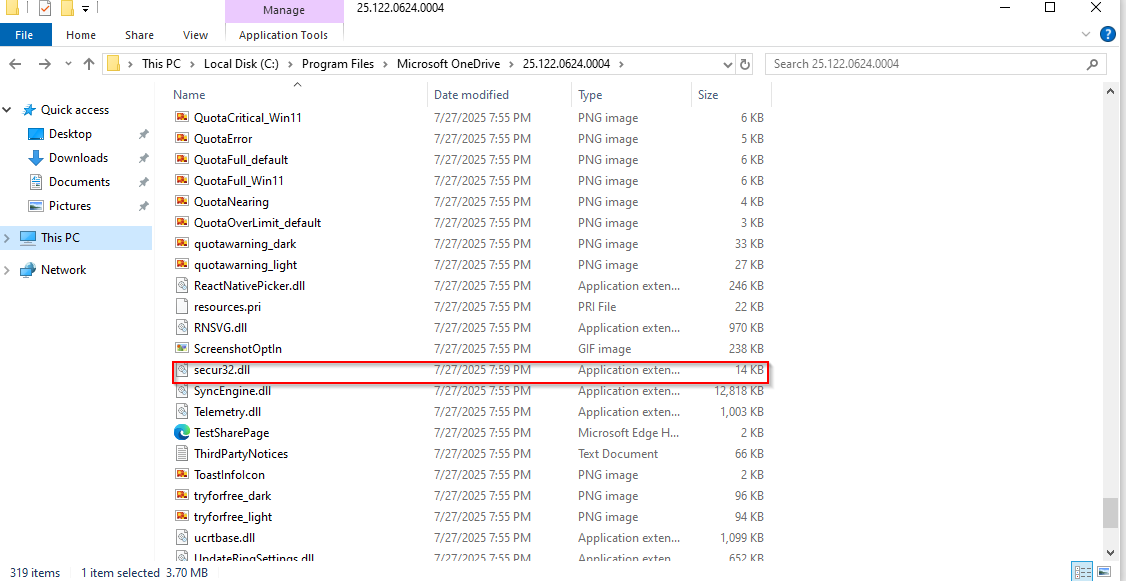
And I still get my beacon connection back to my C2

But analyzing the DLL in pestudio I see that there is an indication the GetUserNameEx is forwarded, which could potentially indicates a DLL proxying

But you know what, I’ll ignore this for now and savor my WIN for today😂
4. Conclusion
I think this one might be one of my go to, I just need to find a clever way to drop it on a target. This technique is so customizable, you can legit try it with any legitimate executable and mix with different types of techniques. I think I’m finally ready to try to whisper so these EDRs don’t hear me (bars…😂)
1007 Words
2025-07-26 17:00